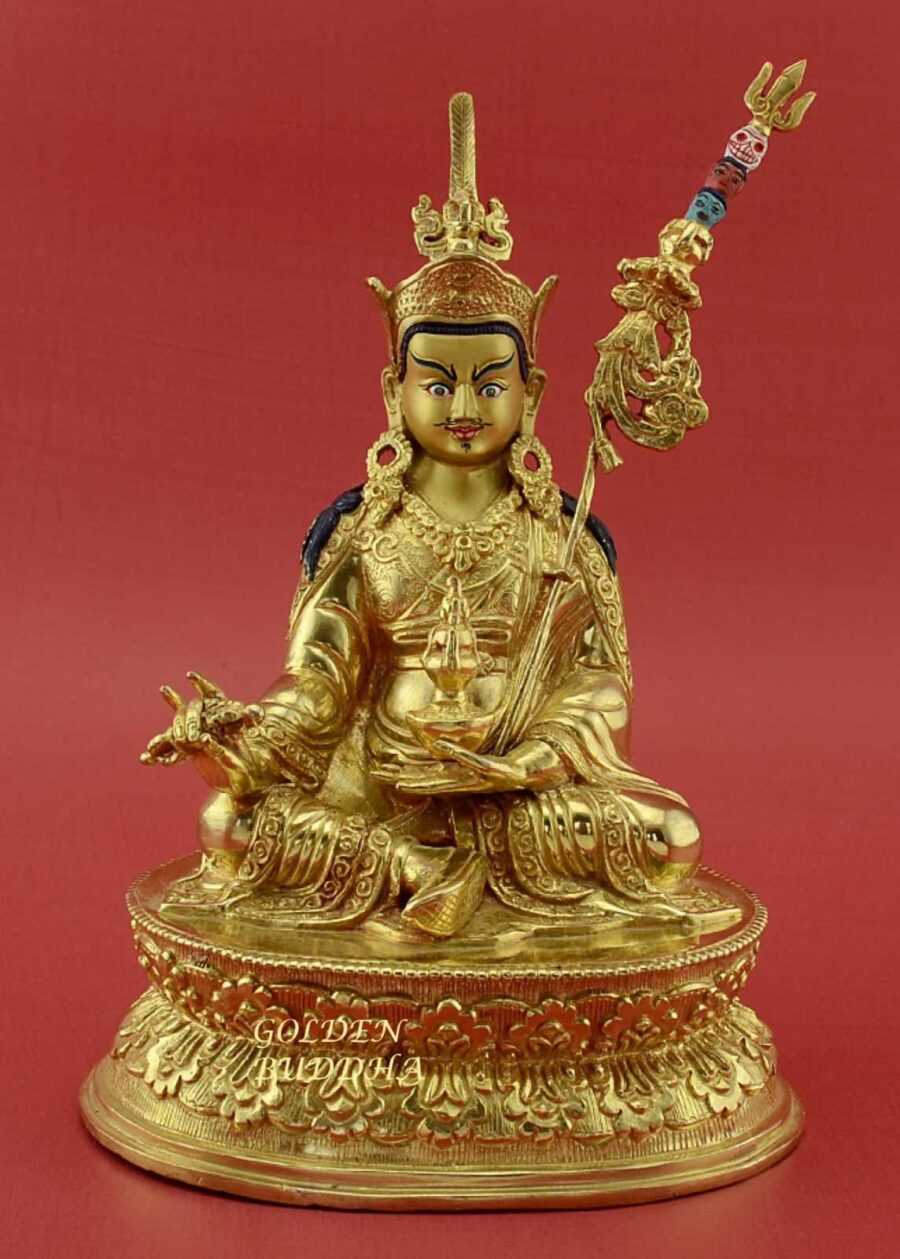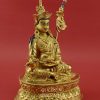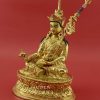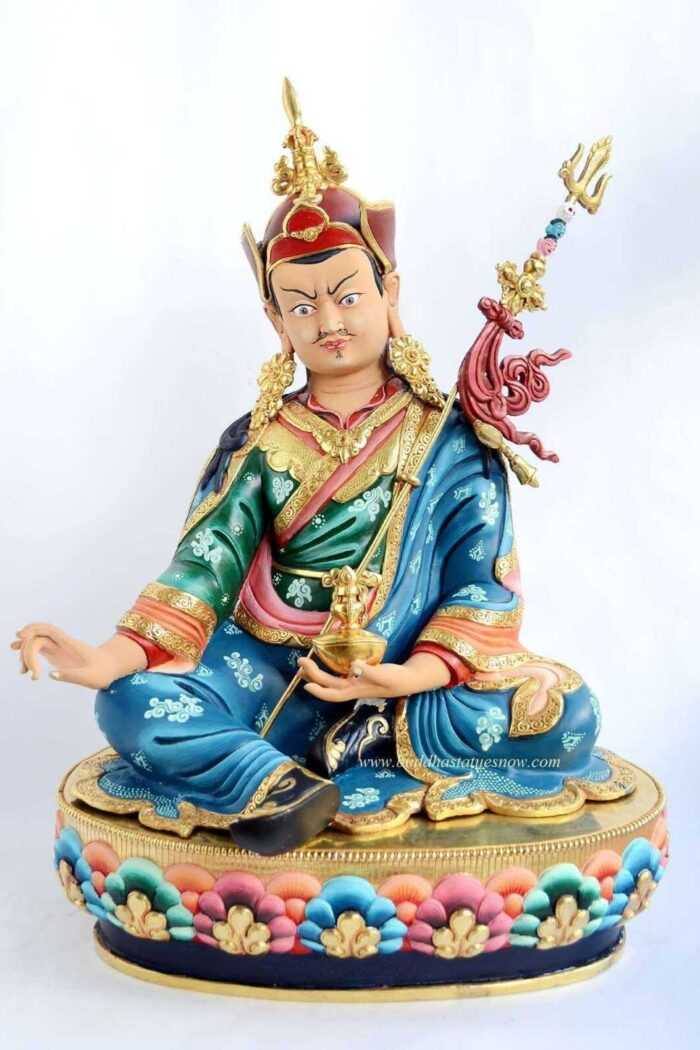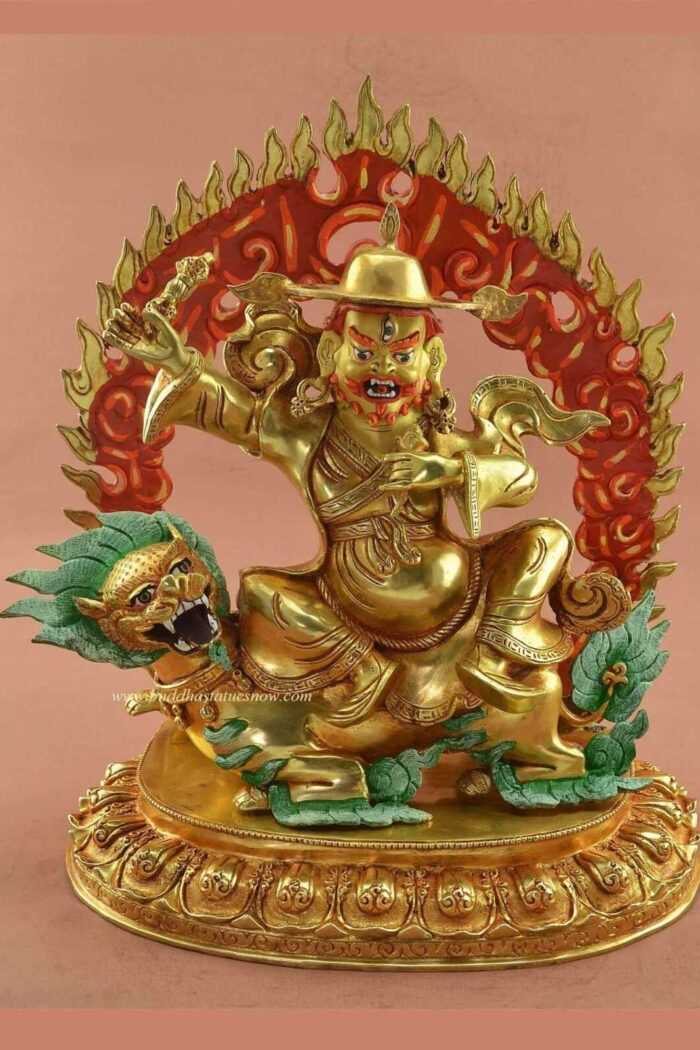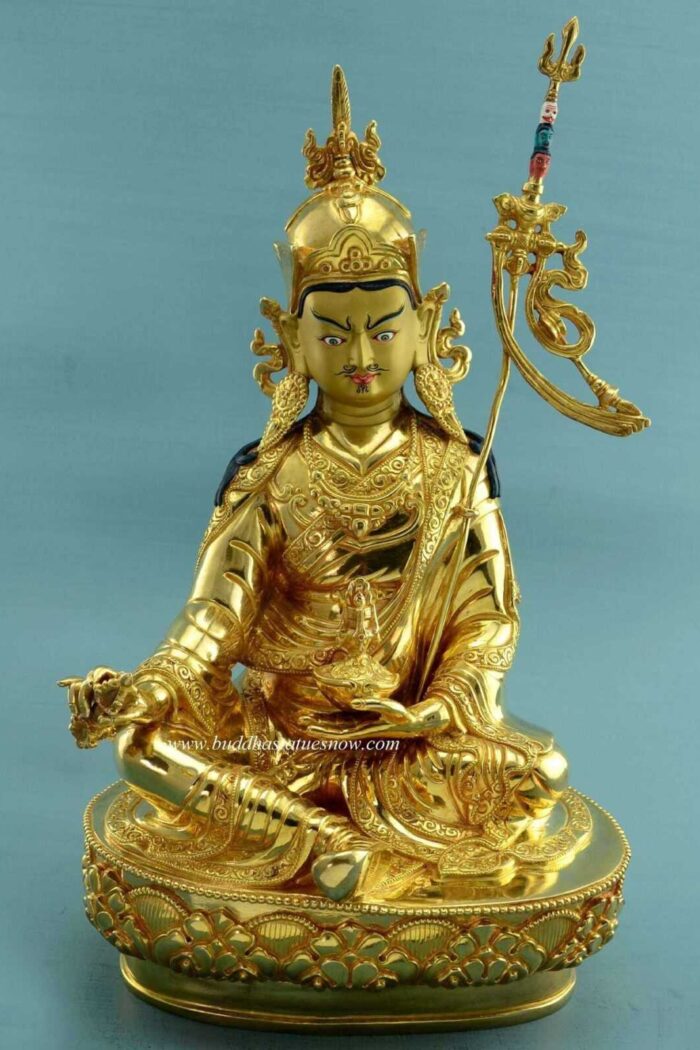Guru Rinpoche was born in the “land of the Dakinis”. Also known as Oddiyana, this land was a historical place and it has also become a pure land of mythical origin. Additionally, Guru Rinpoche is also known as Padmasambhava which means “lotus born”. When asked to identify himself by the King of Oddiyana, he claimed his father was Samantabhadra (Adi Buddha), his mother was Samantabhadri and that he was the “glorious Samantabhadra”. Samantabhadra is the embodiment of “primordial wisdom” known as the Primordial Buddha or also Vairocana.
Our Nepali Padmasambhava statue represents the father of Tibetan Buddhism. He is considered the second Buddha by Vajrayana practitioners. Gautama Buddha being the Buddha of our time who taught the Dharma. However, in Tibet his status is that of second Buddha of our time who taught Tantric Buddhism to sentient beings.
Nepali Padmasambhava Statue Features:
This statue of Padmasambhava holds the khatvanga supported by the palm of his left hand. Impaled on the khatvanga are 3 heads representing the 3 worlds (Trailokya). These 3 worlds are desire, form and formlessness. Their impalement on the khatvanga represents his total liberation from them.
In his right hand he holds the vajra which is s symbol that is won in battle. It symbolizes the indestructibility of the diamond and the unstoppable force of the thunderbolt. Additionally, it is the preferred weapon of the Vedic God Indra. The vajra has become associated with spiritual perseverance and indestructibility. Furthermore, the word vajra means diamond or thunderbolt in Sanskrit.
Our Nepali Padmasambhava statue features the 5 petals of the lotus flower on his hat. Additionally, in the palm of his left hand he holds the elixir of eternal life in his vessel of immortality. This statue is hand crafted with intricate detail by our master artisan in Nepal.
Our sculptors in Nepal use the lost wax method which results in the intricate details that are portrayed in this Nepali Padmasambhava statue. Additionally, our Nepali artisans have been supplying the Tibetan monasteries with Buddha statues for over 1000 years. As a result, when you purchase one of our Nepali Padmasambhava statues you can be assured you have purchased a monastic quality sculpture. Click here to learn more about Nepali Sculpture.


